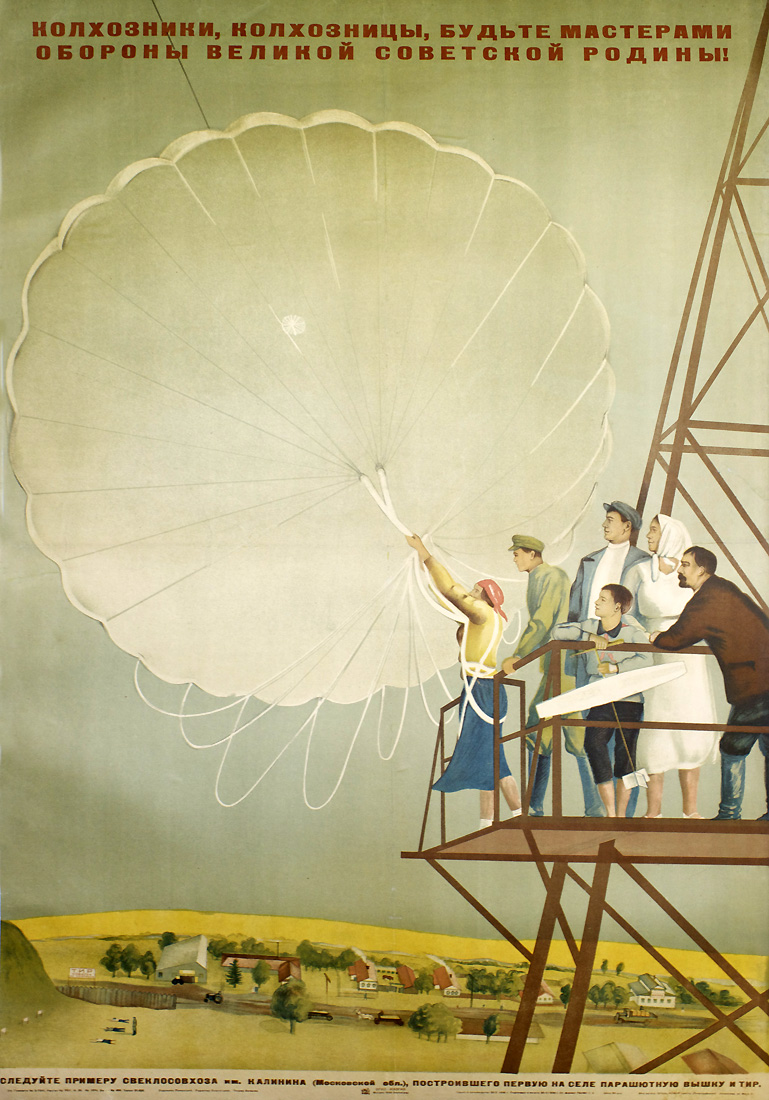
Men and women of collective farms! Be skillful in the defense of the great Soviet motherland!
Poster Number: PP 332
Category: Military
Poster Notes: This poster enforces the message of universal military training for all Soviet citizens. Vsevobuch was the U.S.S.R.'s universal military training.
Media Size: 45x32
Poster Type: Lithograph
Publishing Date: 1936
Editorial Information: Editor Povolotskaia; Technical Editor Iakovlev
Technical Information on Poster: Izogiz No. 7831; I. 35; No. 1574; Submitted for production May 23, 1936 [and] Approved for printing June 28, 1936; Order No. 450; Standard format 72 x 104; Volume 1 sheet of paper; [Printed at] 3 Mir Street
Print Run: 30,000
Glavlit Directory Number: B-7290
Catalog Notes: PP 332 Military
Artist: Pomanskii, Nikolai Nikolaevich — Поманский, Николай Николаевич
Nikolai Nikolaevich Pomanskii was chiefly recognized as a landscape and portrait artist but he also worked in the graphic arts designing political posters. Pomanskii received his art education at the Moscow Stroganov Institute of Art where he graduated in 1904. He obtained further artistic education at the workshops of Konstantin Alekseevich Korovin and Sergei Vasilievich Ivanov. Pomanskii left Russia to study at the School of Fine Arts in Paris, and in 1908, he returned to Russia and ...
Read More About This Artist
Printer: 24th Lithography Workshop of the Poligrafkniga Trust of Ogiz, Leningrad — 24-я типография ОГИЗа РСФСР треста Полиграфкнига, Ленинград
The 24th Lithography Workshop was located at Kronverkskaia and Mir Streets in Leningrad (St. Petersburg). Historically, the workshop had its roots in Imperial Russia and it was a large printing operation founded in 1881 by Theodore Kibbel (a.k.a. Fedor Fyodorovich Kibbel). Shortly after the printer was nationalized by the Soviets, it became the 1st State Lithography Workshop. In 1924, the workshop was named in honor of Mikhail Pavlovich Tomskii (1880-1936), head of the Soviet trade ...
Read More About This Printer
Publisher: Ogiz-IzoGiz, Moscow-Leningrad — Огиз-Изогиз, Москва-Ленинград
Ogiz was the Association of the State Book and Magazine Publishers. Its main offices were located in Moscow and in Leningrad. The Sovnarkom of the Russian Socialist Federative Soviet Republic established Ogiz in 1930 to centralize publishing activities under a state monopoly in order to eliminate duplication of printed material, streamline and control publishing production and output, and to create a base for marketing books, training and technical manuals. In 1931, the Central Committee of the USSR ...
Read More About This Publisher